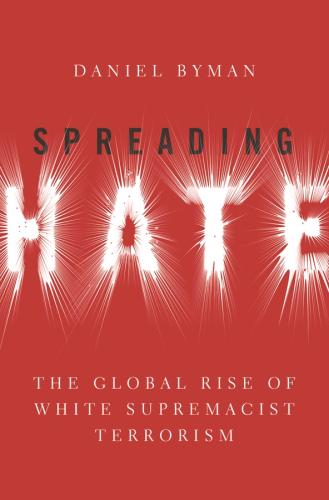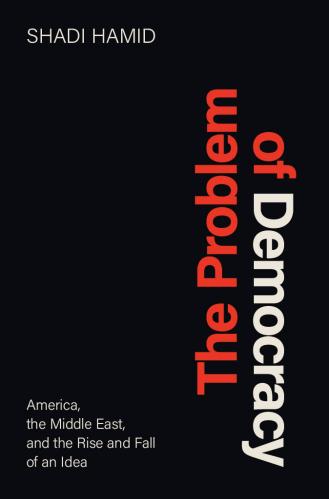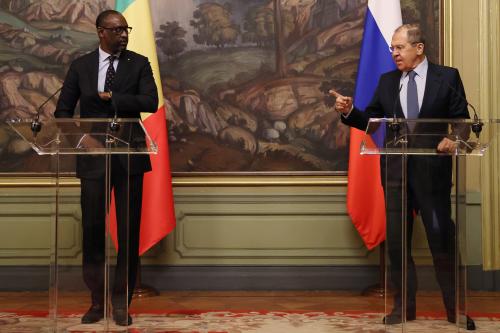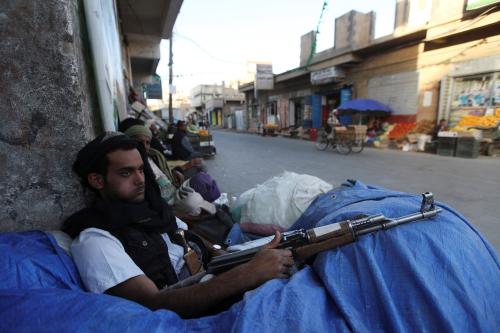This piece is part of a series titled “Nonstate armed actors and illicit economies in 2023” from Brookings’s Initiative on Nonstate Armed Actors.
Four factors will critically shape the landscape of nonstate armed actors and illicit economies in 2023 and beyond:
- the new geopolitics;
- persisting structural weaknesses of government responses to nonstate armed actors, amplified by the lasting effects of COVID-19;
- the synthetic drugs revolution sweeping global crime markets; and
- the reshaping of criminal actors and their power and allegiances in Russia and Ukraine.
This opening commentary for the yearly briefing book of the Brookings Initiative on Nonstate Armed Actors details the first two.
The overall picture is one of an augmented, if reshaped, threat of nonstate armed actors — even as global powers have abandoned many elements of the post-9/11 global fight against terrorism and focused less on combating militants and organized crime outside their homelands. Yet the power of nonstate actors vis-à-vis the state has grown, including their capacity to embed themselves in official government structures as hybrid actors, rather than merely informally governing territories, economies, and institutions.
Great Power Competition
The effects of great power competition on nonstate armed actors go beyond reduced attention to nonstate threats outside the homelands, and beyond the U.S. pullback from large-scale military deployments and state-building abroad. Great power competition makes efforts to combat nonstate armed actors far more difficult, yet newly significant.
A core characteristic of the post-9/11 counterterrorism regime was global acceptance of the notion that nonstate armed actors must be countered everywhere. The means differed across localities and global acquiescence was never perfect: For example, Iran adroitly sponsored militias in the Middle East and North Africa. Despite intense U.S. pressure and expansive buyoffs, Pakistan never ended its vital sponsorship of the Taliban in Afghanistan. Governments and political parties in Latin America, Jamaica, Brazil, India, Nepal, and parts of Africa co-opted and used criminal actors for their own political ambitions. Yet, when their policies deviated in practice, governments found it necessary to cloak the subterfuge in a veneer of compliance.
The world is now back to the Cold War-era tenet that one country’s terrorist is another’s freedom fighter. One manifestation is not merely the proliferation of private security companies and militias outside the West — often proxies for rival powers — but also attitudes toward foreign fighters. While much of the post-9/11 regime was defined by efforts to stop the stream of foreign fighters, they now head to Ukraine — not just brought in by Russia from Syria and Central Asia, but also thousands from the West to support Ukrainians, sometimes in violation of their countries’ laws but without prosecution in the West.
Similarly, efforts to stop terror being financed through Islamic hawalas and money-laundering became a super potent pillar of the post-9/11 order. Yet online fundraising and hundi informal money-transfers now fund arms purchases by the anti-junta resistance in Myanmar, with Western governments appropriately rejecting the Myanmar junta’s demand they be labeled terrorist, and not aggressively countering the financial flow.
Meanwhile, as the United States prioritizes narrower foreign policy objectives — strengthening the Asia-Pacific region against China’s dominance, and countering Russian aggression in Europe and beyond — China and Russia are far more extensively inserting themselves into local conflicts in distant places. Beijing does so not merely through diplomatic and economic sway, but also by offering a vision of China as a peacemaker and a stabilization alternative to the West. It explicitly embraces governments without insisting on policies of inclusiveness, nondiscrimination, and equity. It is also selling its often-authoritarian law enforcement capabilities, including cyber, in the Asia-Pacific, Africa, and Latin America.
Through its proxy, the Wagner Group that operates in various African countries and Ukraine, Russia is selling an alternative vision of counterterrorism (CT) and counterinsurgency (COIN). It centers on crushing militants through sheer brutality, replicating Russian scorched-earth COIN policies in Afghanistan, Chechnya, and Syria, and embraces indifference to civilian casualties and torture. Wagner’s approach makes no pretense of seeking to win local populations’ hearts and minds, but rather to crush their will as much as the will of the militants.
From Mozambique to Libya to Mali, Wagner’s approach is already showing deficiencies: failing to defeat insurgents and exacerbating local militancy and jihadi threats. Such failures reveal that Wagner frequently focuses on different goals — namely, access to local resources such as gold and minerals, and even antiquities as Libyan officials told me in February 2022, to prop up the Russian regime.
Wagner’s deployments to Ukraine have further depleted its most valuable assets and elite capabilities, as the group operates over wider and disparate geographic areas with little local knowledge. Though few Wagner operatives appear to have been pulled out of Africa, the quality and training of new recruits have suffered dramatically. And Wagner’s performance in Ukraine, such as in the Bakhmut battle, remains lackluster and characterized by high casualties.
Yet despite Wagner’s visible COIN and CT deficiencies, its pitch remains potent and the group remains entrenched in Africa and Venezuela, where Latin American law enforcement officials told me in spring 2022 that Wagner now has a presence and role in gold smuggling. What Wagner is selling beyond COIN and CT is serving as a praetorian guard to foreign governments, whether elected or juntas, and a tool for subduing political opposition.
On January 20, the United States announced it would designate the Wagner Group as a significant transnational criminal organization, an indictment based among others on Wagner’s weapons purchases from North Korea. Beyond Wagner and its support networks, the United States and other governments will also be able to impose sanctions on actors hiring Wagner or allowing its activities on their territory. But the United States will be able to choose who it wants to sanction, and which governments, such as in Africa, to allow off the hook.
Persistent weakness of government responses to militancy
The reprioritization and reshuffling of countries’ responses to militancy abroad is taking place in the context of continual local government weaknesses.
In Africa, two arcs of instability persist. One runs from Nigeria across the Sahel and West Africa, with intense instability in Mali, Cameroon, Chad, and Burkina Faso. In Nigeria, instability is driven by many groups other than jihadis, but the Islamic State in West Africa Province remains the most dangerous and is expanding into wider parts of the country.
The other arc of instability runs from the Horn through southern Tanzania to Mozambique.
In many of these countries, COIN and CT efforts have struggled for years, yet militants’ capacities are increasing. This closely mirrors the problems of COIN efforts in Afghanistan and stabilization efforts in Colombia. Eventually, often with external support, governments partially clear the militants from select areas, but the “hold” phase becomes a mire, and effective “building” of a legitimate state addressing local needs rarely takes place. Thus, conflicts drag on, and militants perhaps mutate, but persist.
COIN efforts in Mozambique are the latest case in point. After the much-heralded “success” of the Rwandan and Southern African Development Community (SADC) in clearing al-Shabaab from the Cabo Delgado region in the fall of 2021, militancy dispersed to other parts of the country and southern Tanzania. Local human security remains precarious, and nothing significant has been done to address the real marginalization, disparities, and grievances that feed the conflict.
COVID-19 amplified many national governments’ deficiencies and unwillingness to mount effective and multifaceted policies to counter militant and criminal groups, from badly needed and difficult-to-achieve police reform to anti-crime socio-economic programs to address root causes of instability. Government budgets have not recovered, even as hundreds of millions of people were thrown into poverty, illicit economies, and the hands of nonstate armed actors.
Worse still, local governments often fight the militants half-heartedly: unwilling to devolve power, be accountable, share resources more equitably, and make the necessary expenditures to truly end conflict. Many governments benefit materially, diplomatically, and politically from simmering violence. Wagner’s partial, brutal solution is sufficient for their purposes.
In the West, the dominant terrorism threat now is far-right extremism. In the United States, as Dan Byman outlines, law enforcement and justice agencies scored important investigation and prosecution successes in 2022, including of perpetrators of the January 6 insurrection. As Bruce Hoffman and Jacob Ware point out, among the prosecutions that promise to have significant incapacitation and deterrence effects have been leaders of the Oath Keepers and Proud Boys.
The far right’s dangerous agitation persists. In my December 2022 interviews with Trump’s supporters and County Supremacy adherents in Montana and Idaho, I found not only a virulent rejection of federal government institutions, but also a firm belief that the idea of a United States of America was finished. To them, white people suffered intensifying repression, freedom and rule of law had ended, a civil war — perhaps around the 2024 elections – was inevitable, and preparing for self-defense was necessary. While espousing such ideas is different from acting them out, I also heard supporters speaking of stockpiling weapons. Perhaps most significantly, I heard systematic and determined efforts to shape all local and state elections, from local school boards to sheriffs. Indeed, the infiltration of radical, insurrectionist ideas into U.S. local law enforcement remains perhaps America’s greatest vulnerability.
The Brookings Institution is committed to quality, independence, and impact.
We are supported by a diverse array of funders. In line with our values and policies, each Brookings publication represents the sole views of its author(s).









Commentary
Nonstate armed actors in 2023: Persistence amid geopolitical shuffles
January 27, 2023